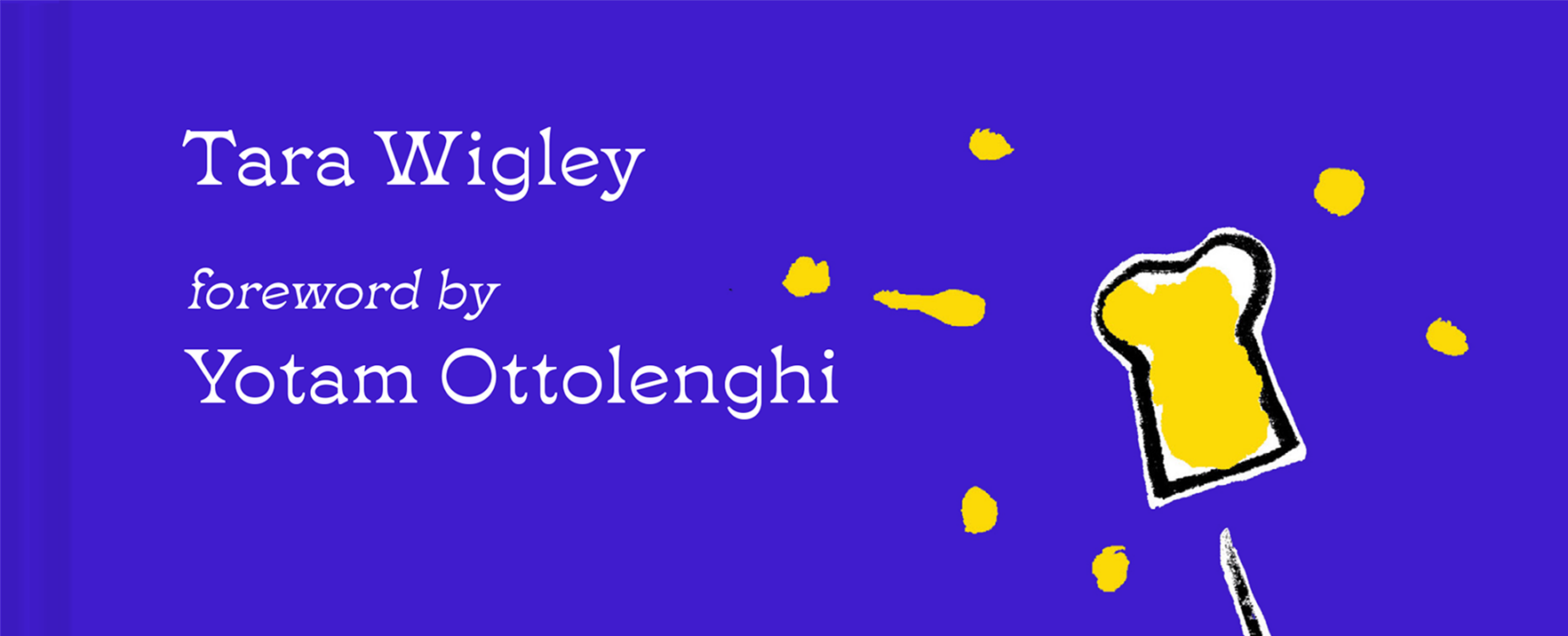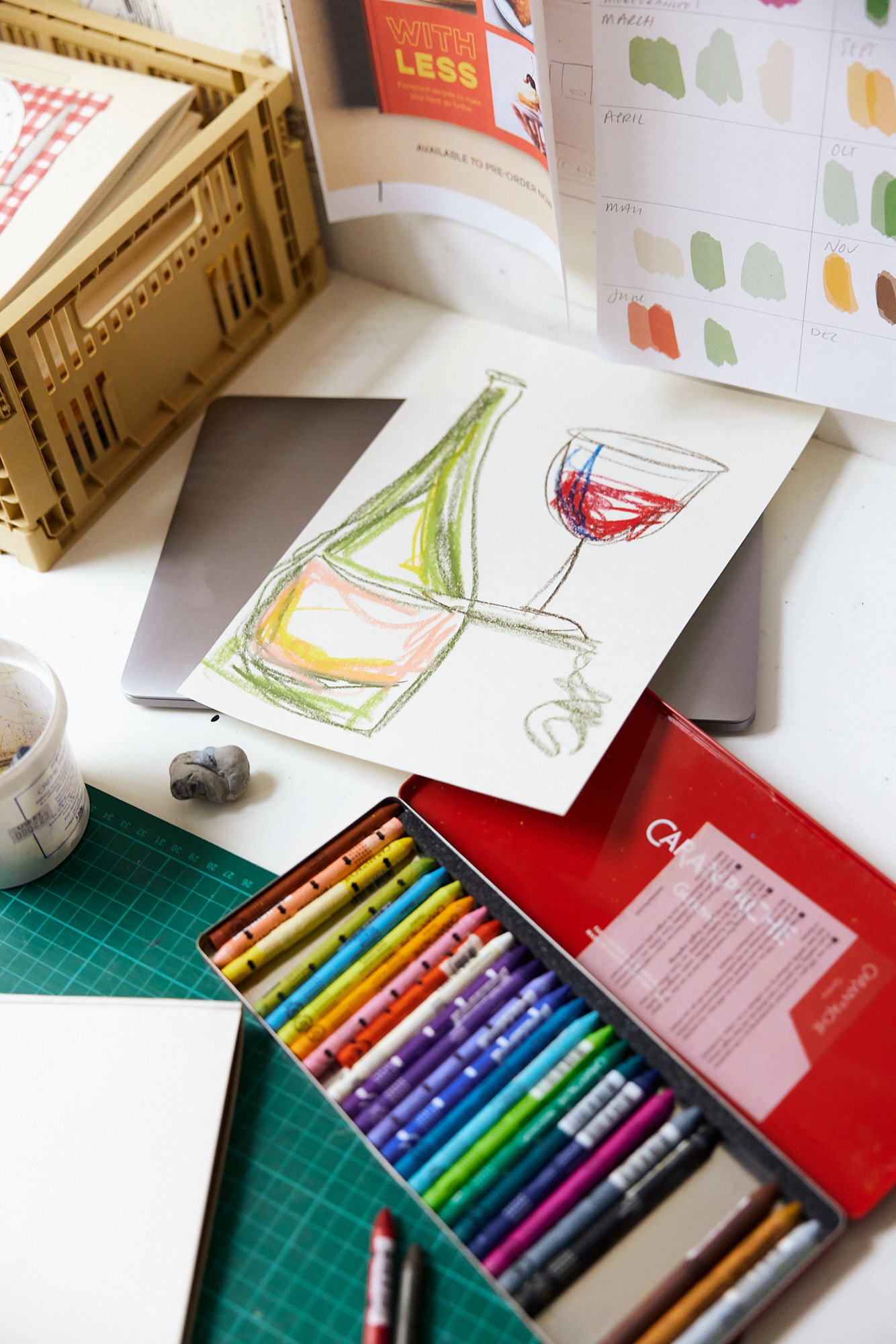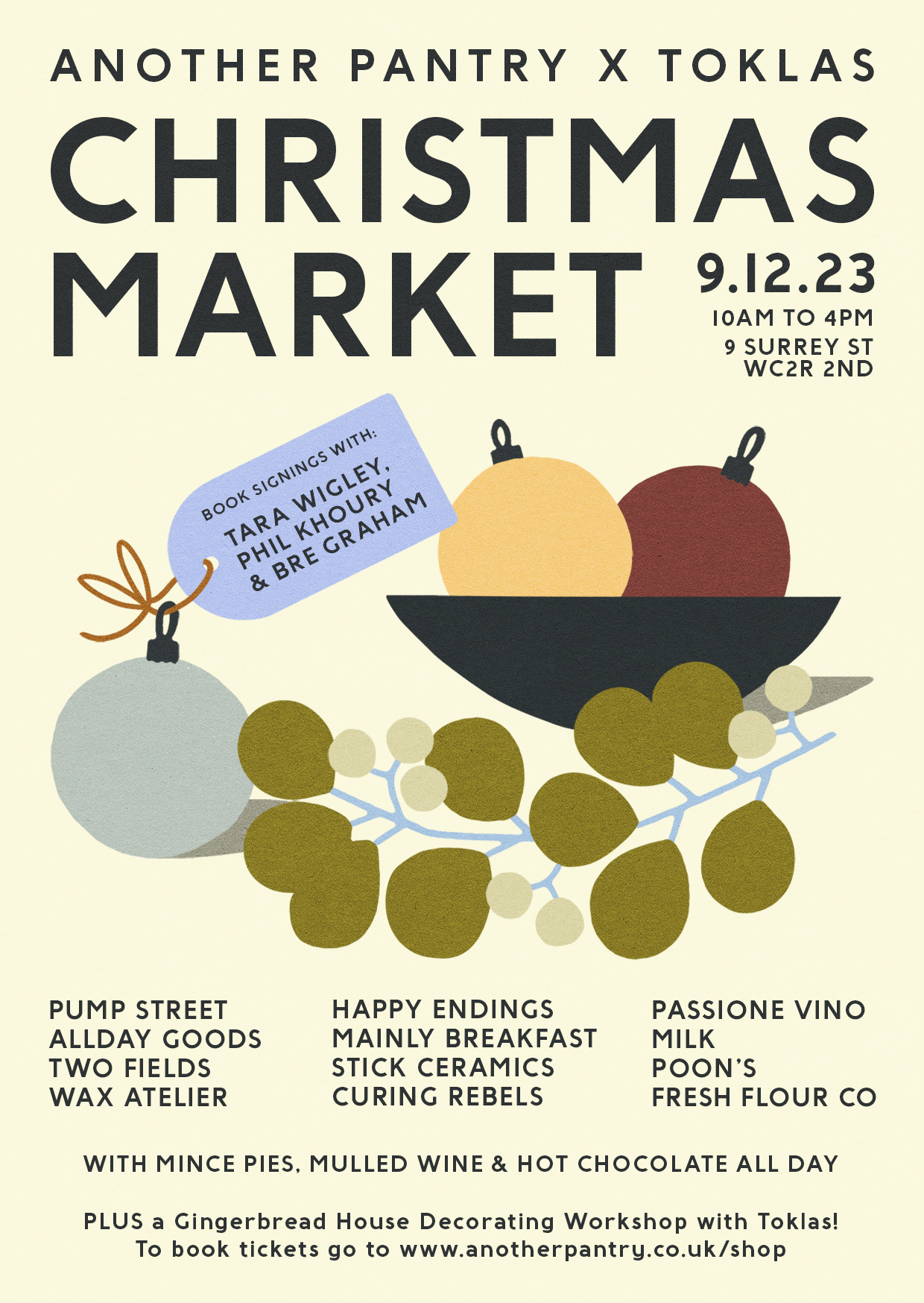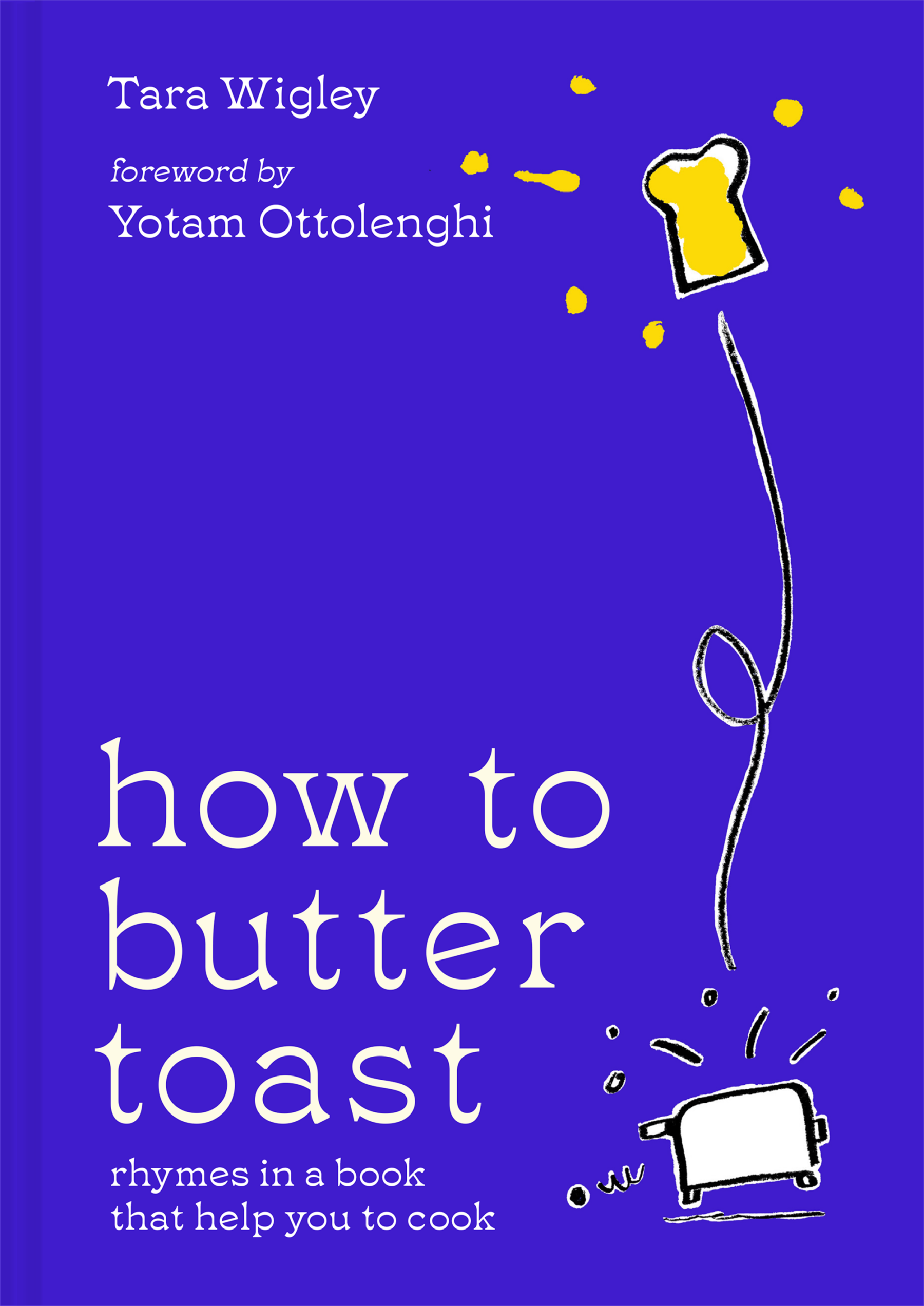
How To Butter Toast: At The Table with Tara Wigley
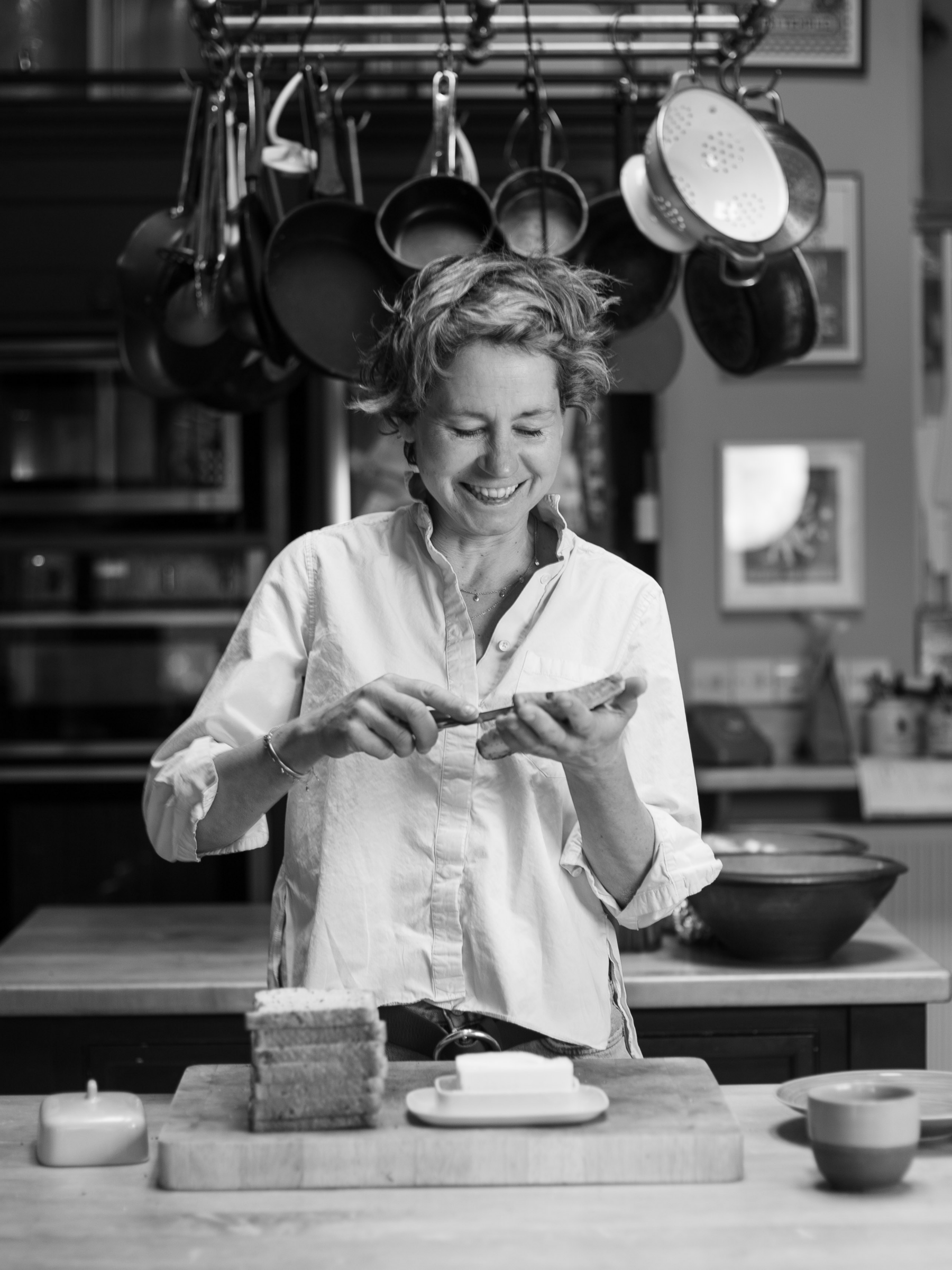
Unintentionally landing yourself a job as one of the first few in the Ottolenghi Test Kitchen is possibly the best scenario to find yourself in when you’ve just dedicated yourself to a career in food — and that’s exactly how Tara Wigley’s start played out. Over the last decade, Tara has quietly helped shape and define the recipes and Ottolenghi cookbooks we have all come to know and love, co-writing, testing and developing, and this year she has released her first solo project. How To Butter Toast is an ingenious take on a recipe book, guiding its readers through the plethora of kitchen basics most of us still haven’t quite grasped, all through the medium of rhyme. Ahead of her book signing at our Christmas Market on Saturday 9th December, we sat down with Tara to chat about her way into food, her food philosophy and her experiences over the last 10 years.
“Food is not a panacea but if it brings people together around the same table to talk, and listen, then it’s a place to start.”
Tara, what was it about food that drew you in? Where does the story start?
The story starts with eating. I’ve always been an eater – one of my brothers and I used to eat so much, growing up, that my Mum gave us a worming tablet at one point as she was convinced there was something wrong with us! I didn’t get into cooking for myself until I was at university, though, where the truism that “if you can read, you can cook” slightly blew my mind. I remember the first time I made a four-cheese Delia Smith lasagne and thought I was so clever! I then spent my twenties in publishing, in London, editing women’s fiction, and didn’t make the switch to food until I had twins, who I took to the Ballymaloe cookery school when they were 18 months old.
Ballymaloe was the biggest blast and Darina Allen, who runs the school, encourages everyone to shoot in all directions, contact their heroes and just go for every opportunity that comes their way. Doing that lead me, after 6 months trying to make it work in London restaurants (not a great idea, if anyone else is contemplating it, with very young kids in tow), to getting ‘the call’ from Yotam. He was looking for someone who was into cooking but not a ‘pro’ chef, per se, who also had a background in words and writing. So whilst I thought I was slightly in danger of falling between two stools, Yotam made me see that ‘straddling two worlds’ was another way of looking at it and that this was really unusual and useful. That was over 12 years ago, so there have been made words, and recipes, and books since then.
How To Butter Toast is your first solo book — it’s perhaps not quite a cookbook, but I think we can definitely still call it a recipe book! What led you to choose the ingenious and unique format of rhymes as a way to convey recipes?
I love all cookbooks: they’re all so different from each other, right? The impetus for How To Butter Toast – and hopefully what it makes people do – was/ is to encourage people to get back in the kitchen and just play around and have fun. And that it’s really not that hard! And that there is so often not a ‘right’ or ‘wrong’ way to do something. There is so much information out there – everyone’s exacting rules for exactly how things should be done – that I wonder if, for the person starting out, there is SO much information that they’re almost confused about where to start.
How To Butter Toast is a collection of 30 or rhymes which each take a really simple recipe – a one or two ingredient recipe like how to roast a chicken, how to poach an egg, how to make a martini, how to butter toast – and then does two things. On one hand, each rhyme shows all the different ways that things CAN be done but then, ultimately – and most importantly – reassures the reader that whatever they do is basically going to be okay and that they have to trust that if they think something looks and tastes delicious then this is how it ‘should’ be done. It’s aim is to entertain and elucidate but also, most importantly, to liberate people. Get in the kitchen, start with good ingredients, turn the heat on and have a play!

Reflecting on the process itself, was the experience of writing this book entirely different from writing the cookbooks you’ve worked in previously, or were there any similarities you noticed in what it means to write about food?
It was a totally different process. All the conventional cookbooks I have worked on before have been collaborative projects. Not just with Yotam but with all the other cooking talents involved in Ottolenghi books. We are in a test kitchen, now, and everyone has a role and every dish is debated and tested and re-tested. How To Butter Toast was me sitting at home in a room without wi-fi and just a pen and paper to hand. For me, there is so much noise out there – in terms of information on line, in particular – that I found the process of writing alone, pen and paper, off line, incredibly satisfying! Of course, I was drawing upon everything I’ve learnt and continue to learn with all-things-Ottolenghi, so one could not happen without the other.
Going back to basics seems a world away from the sorts of recipes you write in your everyday job in the Test Kitchen. Is that owed to a difference between ‘food writer’ Tara and ‘home cook’ Tara? Is there a bigger message on cooking and recipes (or almost a reaction!) coming through in How To Butter Toast?
There is only one Tara, I think, when it comes to work. (Life at home is another matter as I live with my mother and my brother so I find the reality of being mother-daughter-sister-wife quite a headspin, sometimes!!. . . but that’s a separate conversation!) and more and more the ‘food writer’ Tara is interested in the actual reality of people’s lives and what they are achieving and doing in a day. For me, the reality of a Mum on a Saturday morning, for example, is always something I have in mind when I am writing, where most people feel like they are smashing it if they are on top of the laundry, let alone pulling the most incredible meal out of the bag for everyone to sit down together and enjoy.
Everyone has the way that makes it all work for them: I’m a real batch cooker, for example – half a day on the weekend spent cooking sees us pretty sorted for most of the week – whilst others love a tray bake. Recipes need to be more than a set of instructions. They need to either tell a story – about a person or a place or a history, for example – or they need to solve a simple, daily dilemma: what’s for supper.
Motherhood feels like a strong current in your relationship with food and your career path— right from taking the twins over to Ballymaloe Cookery School. Is your love and appreciation of food, perhaps even your ‘food philosophy’ rooted in family? Is it something you hope to pass onto your kids too?
This is a massive question! I was recently on a panel discussion at Caroussel hosted by Clare Finney called ‘Mothers and Mealtimes’ and the summary points are: it’s a minefield! It’s an interesting one, when food means so much to you – if its your ‘love language – this can end up putting pressure on your family when they’d be just as happy (if not more so!) with a baked potato with melted cheese for supper! I cook the whole time – you have to choose between a tidy house and a full fridge, I reckon, and our house is a tip! – and the kids all have things that I make that they love but their perfect night, truth be told, is probably pizza and dough balls. I think the Victorian model of eating – the perfect family sitting around the perfect table all eating the perfect meal – has a lot to answer for in terms of setting the bar. Is anyone’s life like that?! It’s a big subject, though: I could say a lot here!

Another family you’re a core part of is the Ottolenghi family, and when you joined I imagine the food landscape was quite different to how it is today. You’ve probably borne witness to and contributed to the huge changes in how familiar we are with ingredients like tahini and sumac, and even how we use recipes entirely — what has it been like to see those shifts?
It’s been an incredible journey! If you love something you want to share it with as many people as possible so seeing others fall into the tahini-olive-oil-feta-aubergine-lemon-sumac-za’atar pond and not want to get out is a joy. I think it’s not only the ingredients that everyone loves but the way of eating which people think of as ‘Ottolenghi’: food which can often be prepared in advance and served at room temperature on large platters. It makes for a much more relaxed process and atmosphere than the ‘food must arrive piping hot’ school of culinary thought. It’s funny, though, for all that nearly every single supermarket in the UK stocks the likes of sumac and za’atar and pomegranate molasses, ask people their first thought about Ottolenghi recipes and the ‘but where can you get all the ingredients’ question comes up pretty quickly. It’s funny, right? So there are still some recipes and writings to go!
Back in 2020, you also co-wrote Falastin with Palestinian writer and Ottolenghi co-founder Sami Tamimi. Did co-authoring that book leave a lasting impact on you and how you understand the links between food, family, home and community? Did you know that you were working on quite a historically and culturally significant piece of food writing?
Writing Falastin was a hugely privilege and felt like a massive responsibility. It was once that daunted me at the beginning – who am I to co-author this book with Sami – but then I realised that my insecurity, my imposter syndrome, was actually my superpower as I think that a lot of people want to find out more and know more about Palestine but are held back through worries about asking the ‘wrong’ questions or revealing their ignorance.
I’ve always thought that cookbooks are a really safe and great way for readers to come in, to have their hand held and stories told to them as they make a meal, follow a recipe, read a profile of a person or place. As well as making recipes that we wanted people to make on a day-to-day basis, we knew that we wanted to have the space to tell many stories – not just Sami’s – so we were really lucky to have this space in the book to offer glimpses into the day-to-day world of people living and working and making their way in Palestine today.
We knew it was going to be a big book but we were lucky to not have to rush it – it took two years to write, several trips and, of course, a lifetime lived on the part of Sami and his family. It’s the sister book to Jerusalem, which Sami and Yotam did together and it feels powerful to think of these two books sitting side by side on people’s bookshelves, as they should around the table. Food is not a panacea but if it brings people together around the same table to talk, and listen, then it’s a place to start.

Through the many adventures you have been on over the last decade, what would you say has shaped or defined the way that you cook today more than anything else?
I mean, once you’ve drunk the Ottolenghi cool aid – the tahini and olive oil, the feta and aubergines, the lemon and garlic and sumac and za’atar – there’s no turning back, right? I’d say I’m very happily knee deep in tahini with absolutely no plans to climb out. . . So Yotam, for sure, but also the reality of LIFE. Sometimes you just have to open the fridge and have a root around and get dinner out pronto on the table.
Tara’s Pantry
(5 items that are always in your pantry, or that you can’t live without!):
Feta, feta, feta, feta and feta (!). . . or
1. Olive oil (and olives!)
2. Lemons
3. Feta
4. Aubergines
5. Garlic (and can I squeeze in sea salt as well!!). . .
Read more: How To Butter Toast
A collection of rhymes to get you through the cooking basics, Tara Wigley’s first solo ‘cookbook’ is one for the kitchen lover and book worm. It’s clever, witty and at time just very funny, which sometimes is exactly what you need as a cooking companion – the total opposite to intimidating recipes and processes that often keep us away.
